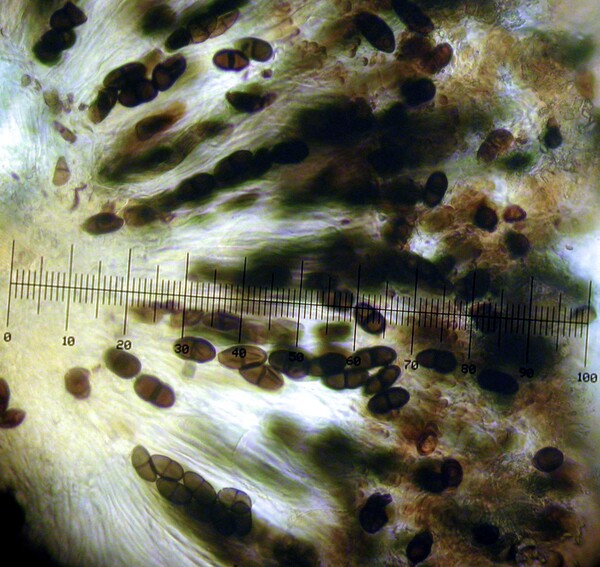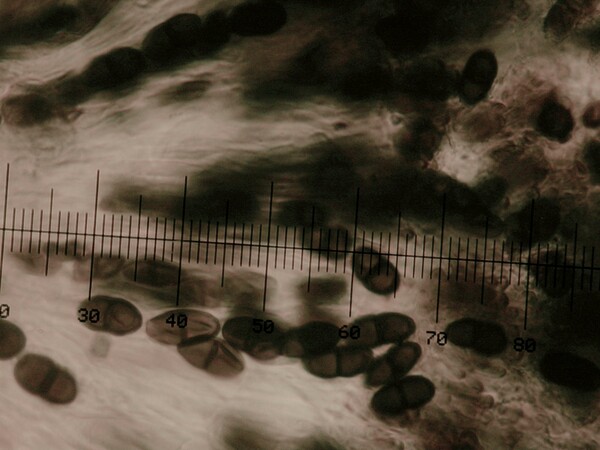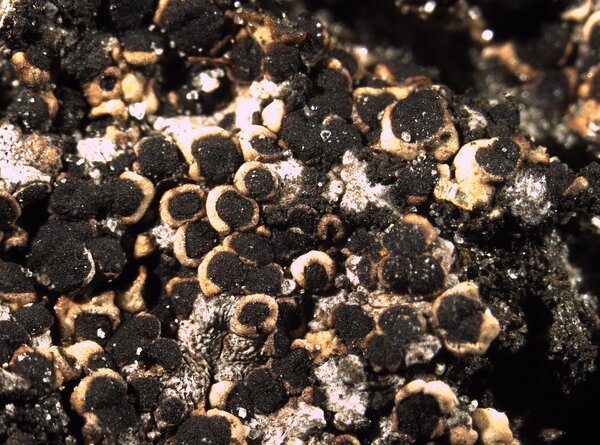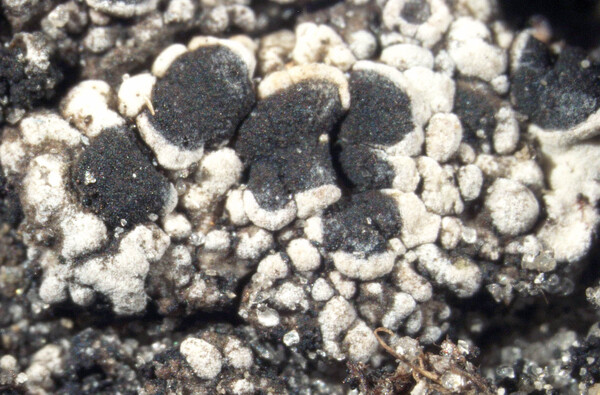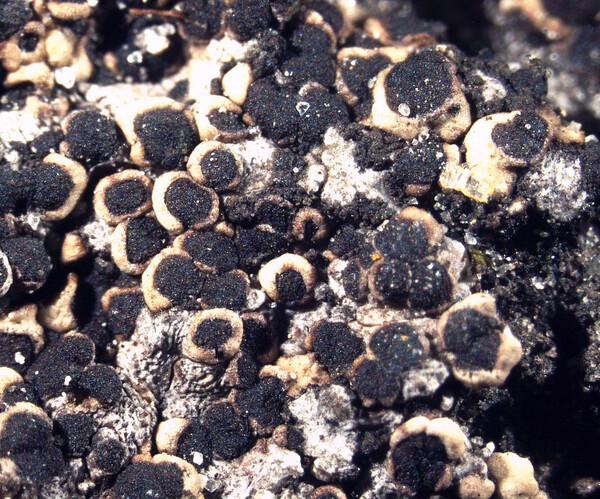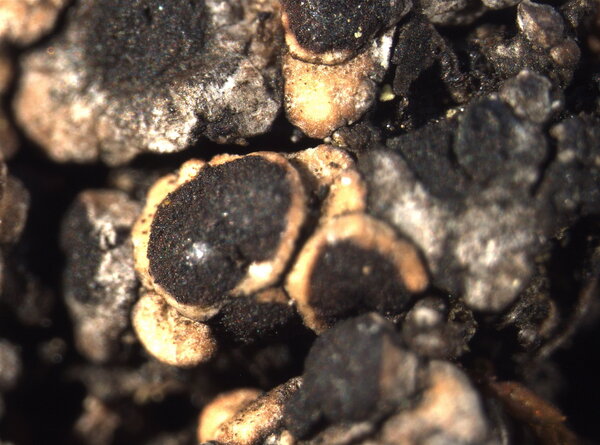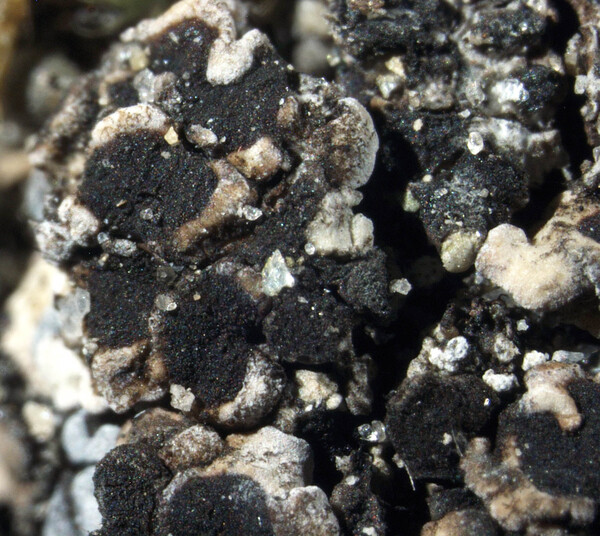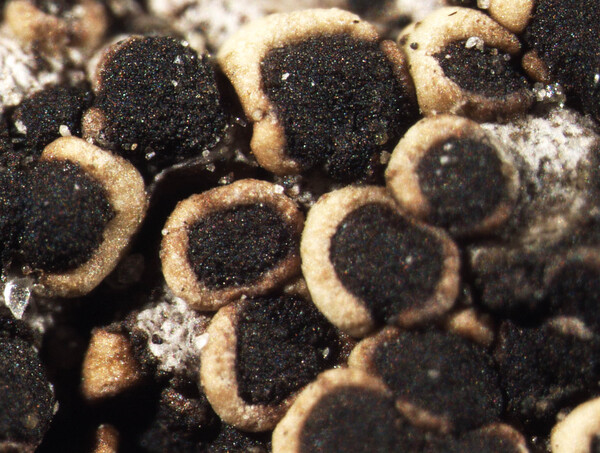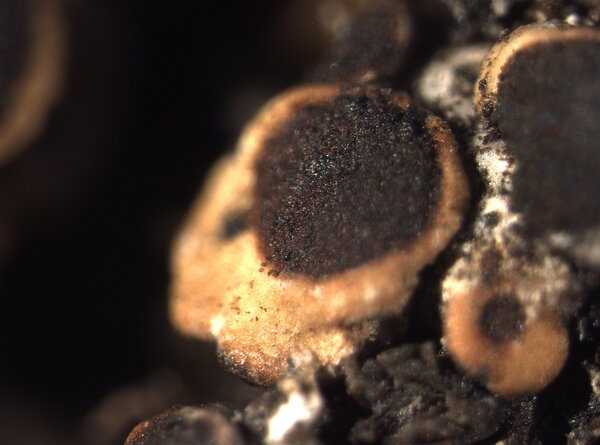Phaeorrhiza nimbosa (Fr.) H. Mayrhofer & Poelt
Nova Hedwigia, 30: 785, 1979 (“1978”). Basionym: Parmelia nimbosa Fr. - Lichenogr. Eur. Ref.: 129, 1831.
Synonyms: Lecanora nimbosa (Fr.) Nyl.; Pachysporaria nimbosa (Fr.) M. Choisy; Psora nimbosa (Fr.) Hepp; Rinodina nimbosa (Fr.) Th. Fr.; Rinodina nimbosa f. nuda (Bagl. & Carestia) H. Magn.; Rinodina nimbosa f. pruinosa (Bagl. & Carestia) H. Magn.; Rinodina phaeocarpa (Sommerf.) Vain.; Squamaria nimbosa (Fr.) Boistel
Distribution: N - Frl, Ven (Nimis 1994, Caniglia & al. 1999, Nascimbene & Caniglia 2003c, Thor & Nascimbene 2007), TAA (Dupla Graec. Lich. 64: Obermayer 1999, Nascimbene 2008b, Nascimbene & al. 2022), Lomb (Obermayer 2015), Piem (Isocrono & al. 2004, 2005b, Hafellner & al. 2004), VA (HAL-19103), Lig. C - Abr (Nimis & Tretiach 1999, Gheza & al. 2021).
Description: Thallus squamulose to subcrustose-areolate in central parts, often lobed at margins, brown to pale ochraceous yellow in shade-forms, sometimes faintly white-pruinose, thick, the squamules more or less rounded, flattened, smooth, contiguous, usually non imbricate, forming a compact crust, the peripheral ones often elongated and forming short radiating lobes; lower surface dark, attached by a dense mat of blackish to dark brown, 4-5 μm thick rhizohyphae. Upper cortex 30-40 μm thick, paraplectenchymatous, with a 10-20 μm thick epinecral layer; medulla rather loose, white in upper part, brown in lower part, merging with a 50-70 μm thick, brown lower cortex. Apothecia at first immersed and cryptolecanorine, then sessile and clearly lecanorine, up to 1.5 mm across, with a black (reddish brown when wet), sometimes faintly pruinose disc and a thin, smooth, persistent thalline margin. Epithecium 10-20 μm thick, reddish brown; hymenium colourless, 120-140 μm high; paraphyses 1.5-2 μm thick at base, distinctly thickened in upper part (to 3-4 μm), with a brown cap; hypothecium colourless, up to 100 μm high. Asci 8-spored, broadly clavate, with a I+ blue tholus, a broad ocular chamber, and a cylindrical to short-conical axial mass. Ascospores 1-septate, sometimes slightly constricted at septum, brown, ellipsoid, rather thin-walled except sometimes at the ends, 18-22 x 8-10 μm, Buellia-type. Pycnidia rare, globose, immersed. Conidia bacilliform, 5-6 x c. 1 μm. Photobiont chlorococcoid. Spot tests: thallus K-, C-, KC-, P-, UV-. Chemistry: variolaric acid, zeorin, and triterpenes.Note: a circumpolar, arctic-alpine species found on naked earth, dead mosses and plant debris on more or less calciferous ground, often in wind-exposed situations, with optimum above treeline; common in the Alps, where it reaches the nival belt, much rarer in the Apennines.
Growth form: Crustose
Substrata: soil, terricolous mosses, and plant debris
Photobiont: green algae other than Trentepohlia
Reproductive strategy: mainly sexual
Commonnes-rarity: (info)
Alpine belt: common
Subalpine belt: rather common
Oromediterranean belt: absent
Montane belt: absent
Submediterranean belt: absent
Padanian area: absent
Humid submediterranean belt: absent
Humid mediterranean belt: absent
Dry mediterranean belt: absent

Predictive model
Herbarium samples
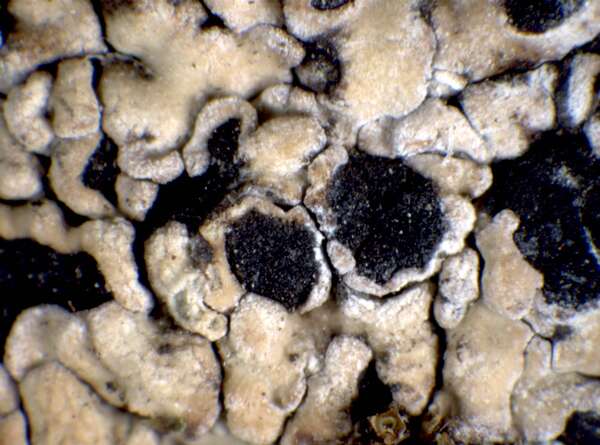

P.L. Nimis; Owner: Department of Life Sciences, University of Trieste
Herbarium: TSB (1775)
2001/11/28
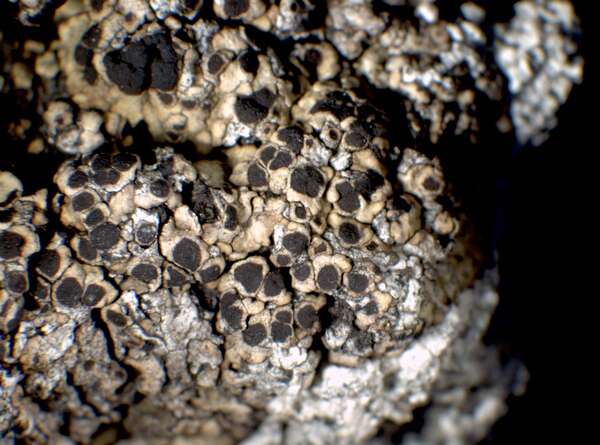

P.L. Nimis; Owner: Department of Life Sciences, University of Trieste
Herbarium: TSB (33091)
2001/12/10
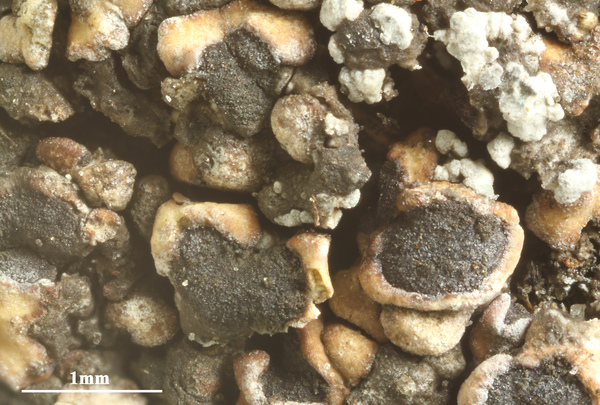

Felix Schumm - CC BY-SA4.0
[20904], Austria, Steiermark, Eastern Alps, Noric Alps, Seetal Alps, 9.4 km ENE of the centre of Neumarkt, ridge between Wenzelalpe and Kreiskogel, 47°05'45'' N, 14°32'50'' E, 2100 m, on lime rich soil. leg. J. Hafellner (no 75983), 1.8.2010, det. J. Hafellner. LICHENOTHECA GRAECENSIS NR. 470
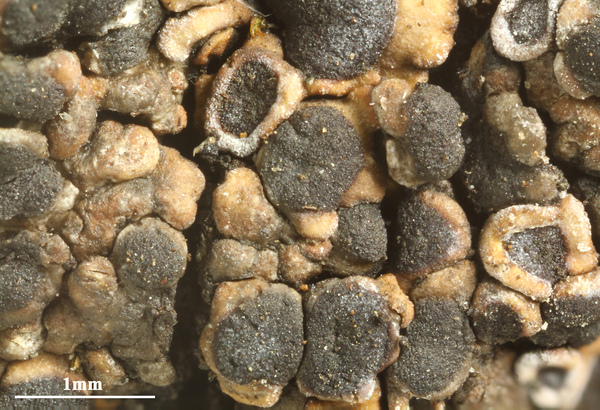

Felix Schumm - CC BY-SA4.0
[20904], Austria, Steiermark, Eastern Alps, Noric Alps, Seetal Alps, 9.4 km ENE of the centre of Neumarkt, ridge between Wenzelalpe and Kreiskogel, 47°05'45'' N, 14°32'50'' E, 2100 m, on lime rich soil. leg. J. Hafellner (no 75983), 1.8.2010, det. J. Hafellner. LICHENOTHECA GRAECENSIS NR. 470
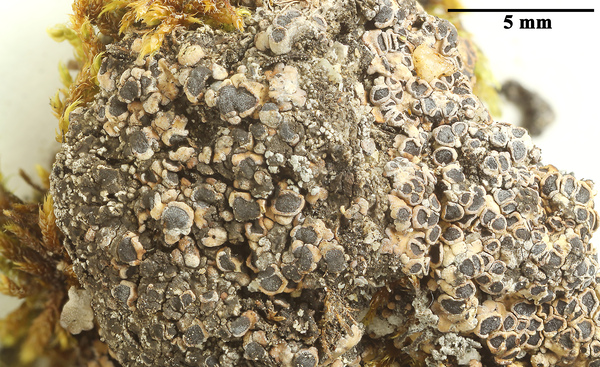

Felix Schumm - CC BY-SA4.0
[20904], Austria, Steiermark, Eastern Alps, Noric Alps, Seetal Alps, 9.4 km ENE of the centre of Neumarkt, ridge between Wenzelalpe and Kreiskogel, 47°05'45'' N, 14°32'50'' E, 2100 m, on lime rich soil. leg. J. Hafellner (no 75983), 1.8.2010, det. J. Hafellner. LICHENOTHECA GRAECENSIS NR. 470
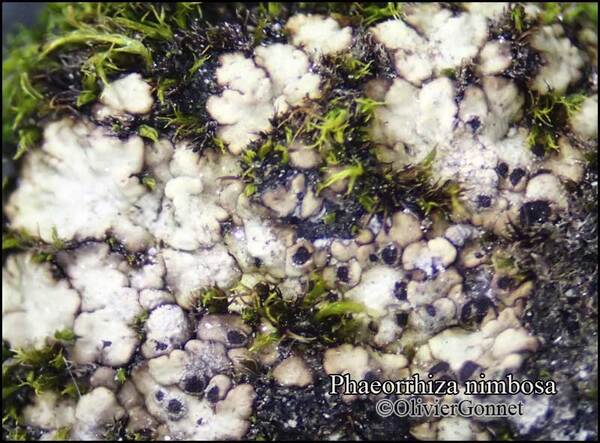
Courtesy Danièle et Olivier Gonnet - Source: https://www.afl-lichenologie.fr/Photos_AFL/Photos_AFL_P/Text_P_3/Phaeorrhiza_nimbosa.htm
France, 21/11/2014 - Mont Cenis - Savoie

Courtesy Danièle et Olivier Gonnet - Source: https://www.afl-lichenologie.fr/Photos_AFL/Photos_AFL_P/Text_P_3/Phaeorrhiza_nimbosa.htm
France, 21/11/2014 - Mont Cenis - Savoie
Growth form: Crustose
Substrata: soil, terricolous mosses, and plant debris
Photobiont: green algae other than Trentepohlia
Reproductive strategy: mainly sexual
Commonnes-rarity: (info)
Alpine belt: common
Subalpine belt: rather common
Oromediterranean belt: absent
Montane belt: absent
Submediterranean belt: absent
Padanian area: absent
Humid submediterranean belt: absent
Humid mediterranean belt: absent
Dry mediterranean belt: absent

Predictive model
| Herbarium samples |


P.L. Nimis; Owner: Department of Life Sciences, University of Trieste
Herbarium: TSB (1775)
2001/11/28


P.L. Nimis; Owner: Department of Life Sciences, University of Trieste
Herbarium: TSB (33091)
2001/12/10


Felix Schumm - CC BY-SA4.0
[20904], Austria, Steiermark, Eastern Alps, Noric Alps, Seetal Alps, 9.4 km ENE of the centre of Neumarkt, ridge between Wenzelalpe and Kreiskogel, 47°05'45'' N, 14°32'50'' E, 2100 m, on lime rich soil. leg. J. Hafellner (no 75983), 1.8.2010, det. J. Hafellner. LICHENOTHECA GRAECENSIS NR. 470


Felix Schumm - CC BY-SA4.0
[20904], Austria, Steiermark, Eastern Alps, Noric Alps, Seetal Alps, 9.4 km ENE of the centre of Neumarkt, ridge between Wenzelalpe and Kreiskogel, 47°05'45'' N, 14°32'50'' E, 2100 m, on lime rich soil. leg. J. Hafellner (no 75983), 1.8.2010, det. J. Hafellner. LICHENOTHECA GRAECENSIS NR. 470


Felix Schumm - CC BY-SA4.0
[20904], Austria, Steiermark, Eastern Alps, Noric Alps, Seetal Alps, 9.4 km ENE of the centre of Neumarkt, ridge between Wenzelalpe and Kreiskogel, 47°05'45'' N, 14°32'50'' E, 2100 m, on lime rich soil. leg. J. Hafellner (no 75983), 1.8.2010, det. J. Hafellner. LICHENOTHECA GRAECENSIS NR. 470

Courtesy Danièle et Olivier Gonnet - Source: https://www.afl-lichenologie.fr/Photos_AFL/Photos_AFL_P/Text_P_3/Phaeorrhiza_nimbosa.htm
France, 21/11/2014 - Mont Cenis - Savoie

 INDEX FUNGORUM
INDEX FUNGORUM
 GBIF
GBIF
 DOLICHENS
DOLICHENS
